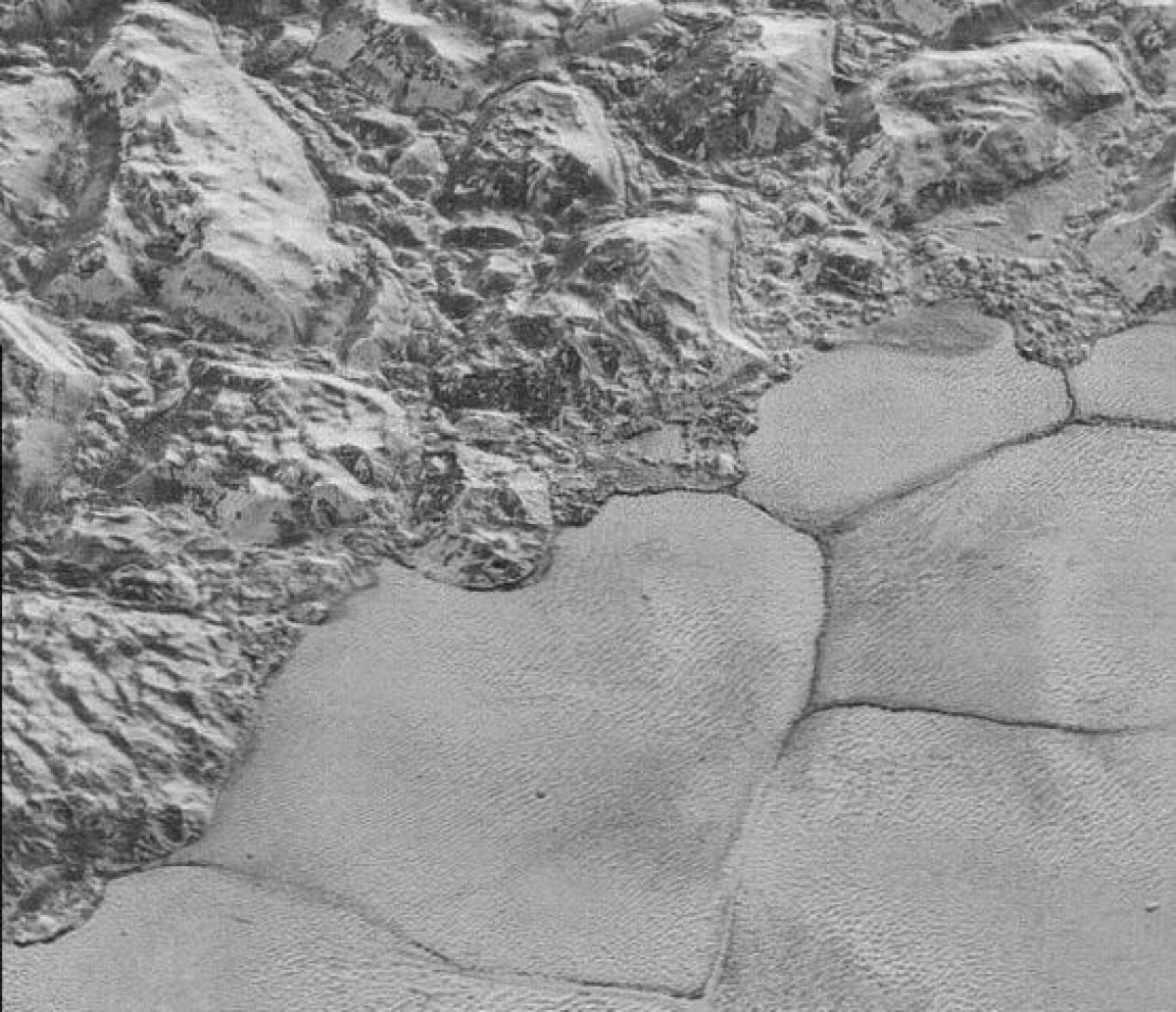Pluto's icy surface is even more exotic than astronomers previously thought. Pluto's famous heart-shaped glacier, a team has discovered, is peppered with dunes. Piles of tiny grains rise high next to mountains jutting out next to the glacier.
A detailed analysis of the dwarf planet's dunes, published in the journal Science, revealed they might be made of solid methane.
"I was looking at the top corner of the glacier, right next to the mountains, and I could see long, straight, regular ridges," Jani Radebaugh, a Brigham Young University geology professor and planetary scientist who had been studying NASA's high resolution photographs of Pluto, said in a statement. "And as I looked really closely, I thought 'those are dunes.' There's no question in my mind those are dunes."
The discovery came as something of a surprise. Previously, scientists had thought Pluto's winds may not be strong enough to sculpt such epic piles of sand.
"We knew that every solar system body with an atmosphere and a solid rocky surface has dunes on it, but we didn't know what we'd find on Pluto," Matt Telfer, lecturer in physical geography at the University of Plymouth and the paper's lead author. "It turns out that even though there is so little atmosphere, and the surface temperature is around minus 230 degrees Celsius, we still get dunes forming… It is another piece of the jigsaw in making sense of this diverse and remote body."

Radebaugh and team think that methane ice, which caps Pluto's heart along with nitrogen ice, breaks up into the fine sand-like particles. Nitrogen sublimation—where the solid becomes a gas—might be kicking these methane particles into the air, where the relatively light winds of Pluto can grab them and pile them up high between the border of the glacier and the mountains. "This is one of the windiest spots on Pluto," Telfer told the Washington Post, "and the winds are in exactly the right direction."
Other explanations for the dunes might include increases in atmospheric pressure, William McKinnon, of Washington University in St Louis, told the Post.
"It's an exciting discovery, I'll say that for sure," Ryan Ewing, a geologist at Texas A&M University who was not involved with the paper, told the Post. "The way that they're recognizing the dunes on the surface is the same technique we've used to identify dunes on Mars."
"It's a really young and interesting and dynamic surface," added Radebaugh in the statement. "Pluto, it turns out, is a lot like Mars or somewhere where we think, 'oh, it's not quite as cold and dead as we might have thought.'"
Uncommon Knowledge
Newsweek is committed to challenging conventional wisdom and finding connections in the search for common ground.
Newsweek is committed to challenging conventional wisdom and finding connections in the search for common ground.
About the writer
Katherine Hignett is a reporter based in London. She currently covers current affairs, health and science. Prior to joining Newsweek ... Read more
To read how Newsweek uses AI as a newsroom tool, Click here.








